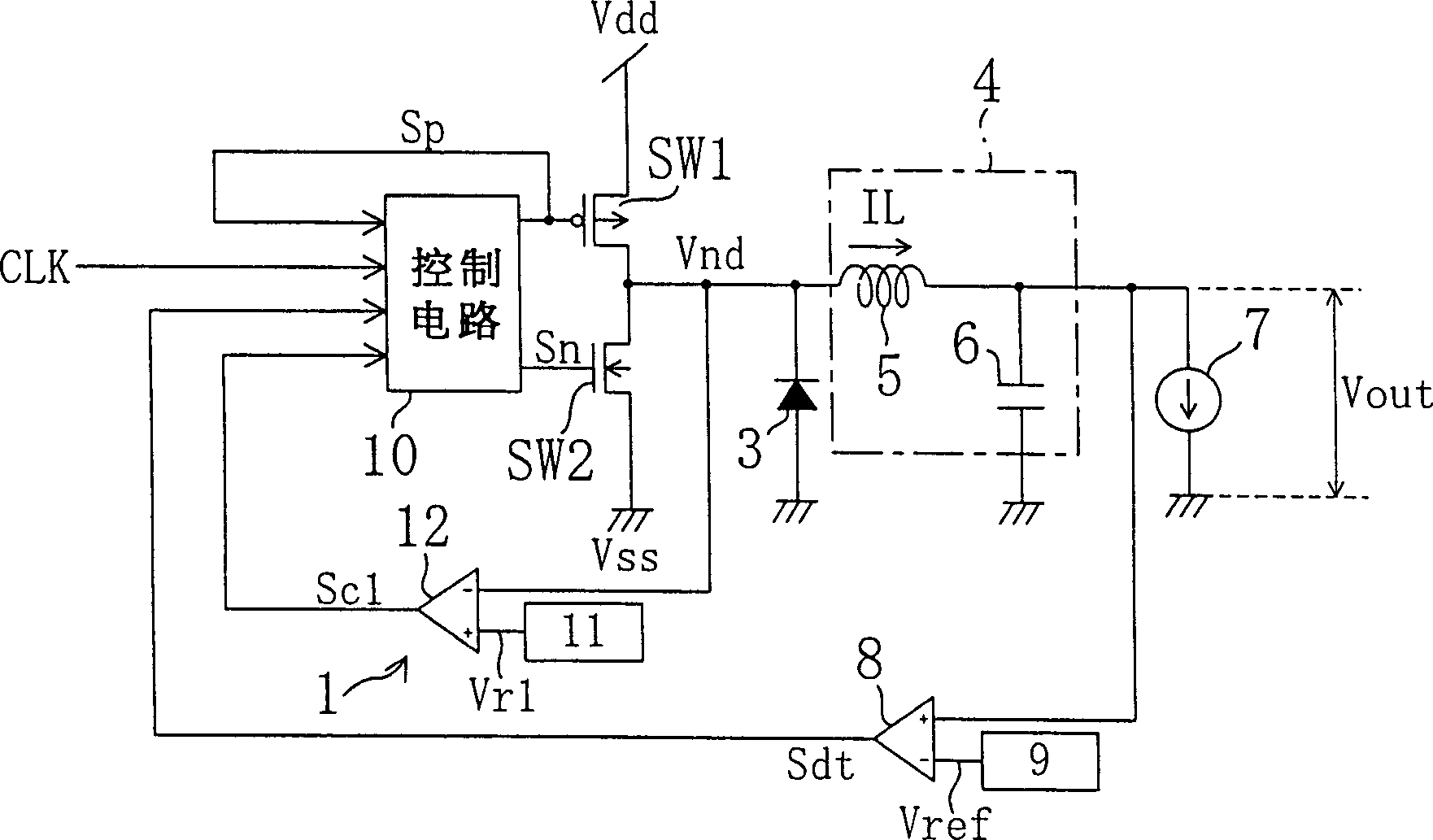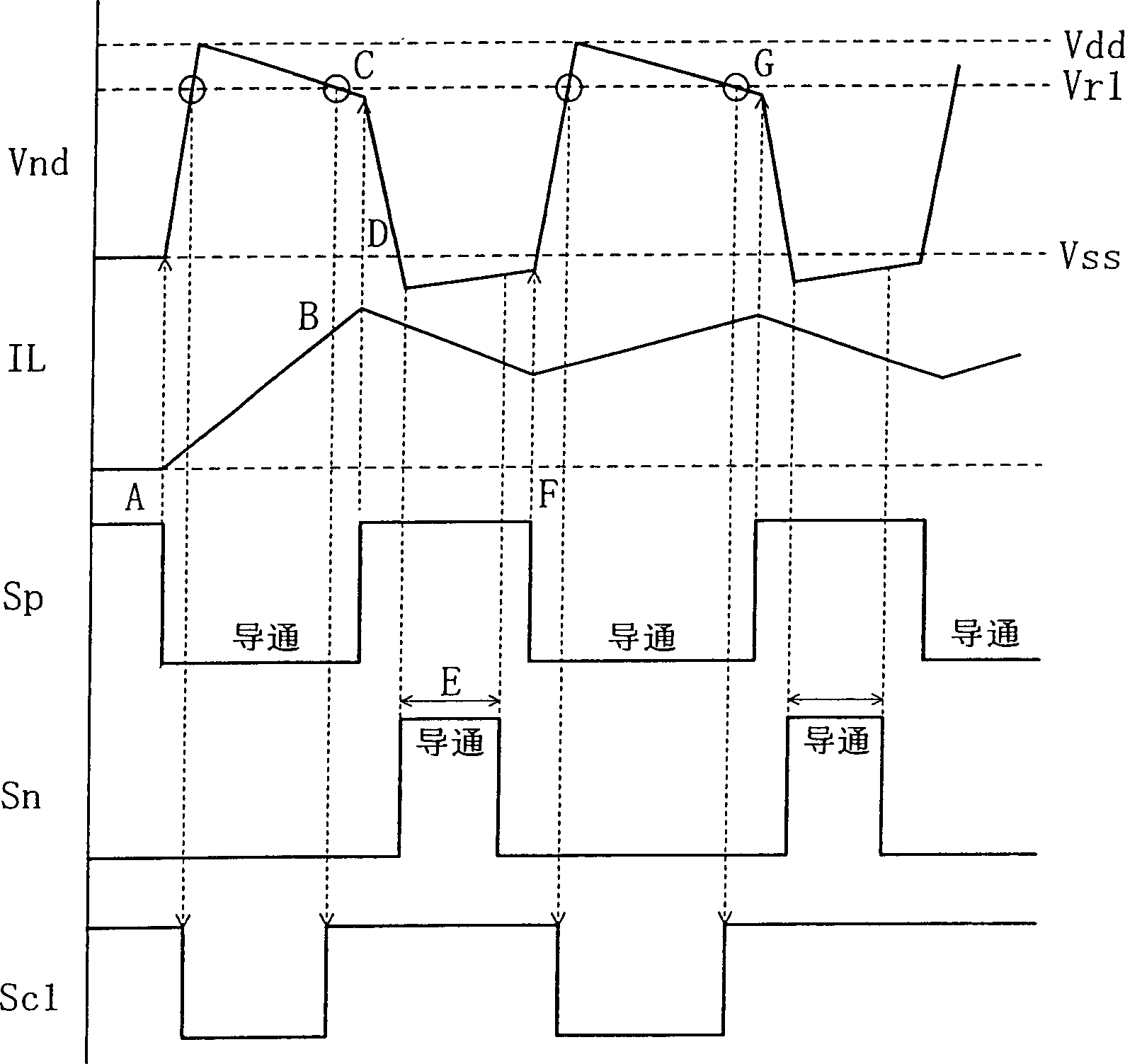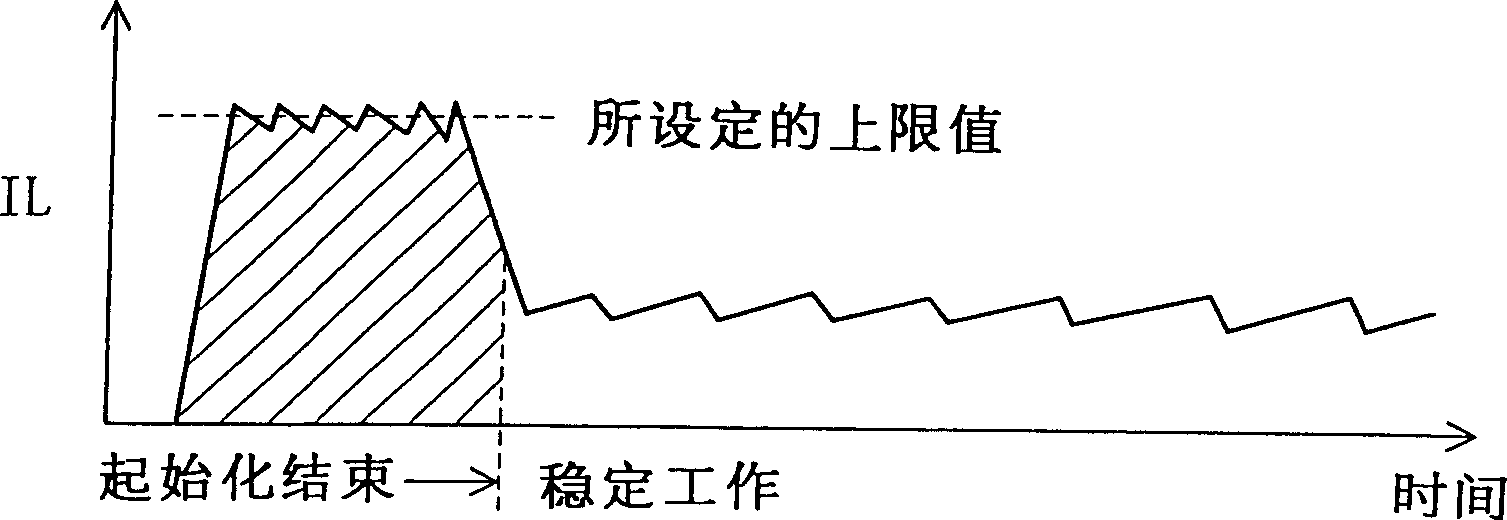Switching regulator, DC/DC converter, and LSI system with switching regulator
A switching regulator and switch disconnection technology, which is applied in the direction of converting DC power input to DC power output, control/regulation systems, instruments, etc. The time required for initialization becomes longer and other problems, to achieve the effect of suppressing the inrush current and suppressing the excess current
- Summary
- Abstract
- Description
- Claims
- Application Information
AI Technical Summary
Problems solved by technology
Method used
Image
Examples
Embodiment Construction
[0037] Hereinafter, an embodiment of the present invention will be described with reference to the drawings.
[0038] figure 1 It is a circuit diagram showing the configuration of a switching regulator according to an embodiment of the present invention. figure 1 Among them, SW1 is a first switch made up of p-type MOS transistors, SW2 is a second switch made up of n-type MOS transistors, and the first and second switches SW1 and SW2 are the first switches that can supply the first potential, that is, the power supply potential Vdd. A power supply (hereinafter referred to as "power supply Vdd") and a second power supply (hereinafter referred to as "power supply Vss") capable of supplying a ground potential Vss as a second potential are connected in series. 3 is a diode for allowing current to flow from the power supply Vss when both the first and second switches SW1 and SW2 are off. 4 is a smoothing circuit for smoothing the potential Vnd of the output node between the firs...
PUM
 Login to View More
Login to View More Abstract
Description
Claims
Application Information
 Login to View More
Login to View More - R&D
- Intellectual Property
- Life Sciences
- Materials
- Tech Scout
- Unparalleled Data Quality
- Higher Quality Content
- 60% Fewer Hallucinations
Browse by: Latest US Patents, China's latest patents, Technical Efficacy Thesaurus, Application Domain, Technology Topic, Popular Technical Reports.
© 2025 PatSnap. All rights reserved.Legal|Privacy policy|Modern Slavery Act Transparency Statement|Sitemap|About US| Contact US: help@patsnap.com



